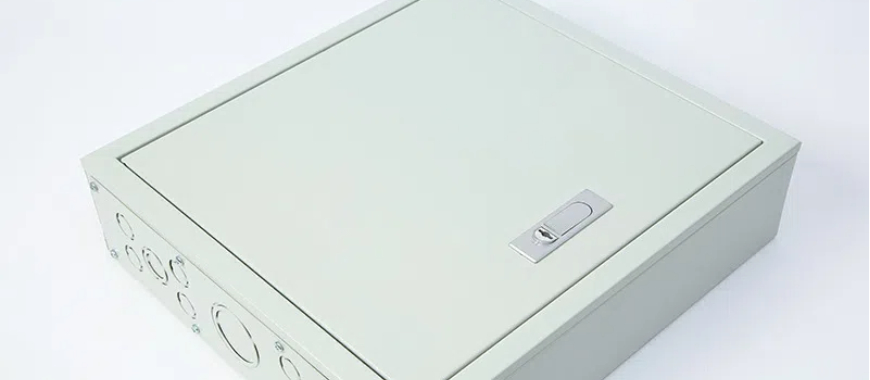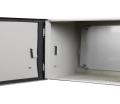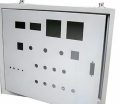
Creating a fiberglass box offers numerous advantages for various applications. These boxes, including a fiberglass box with lid, are durable, lightweight, and resistant to moisture, making them ideal for use in boats or as speaker enclosures. The versatility of fiberglass allows for custom designs tailored to specific needs. When you create fiberglass box structures, you can optimize storage space while ensuring strong performance. A fiberglass box with lid also enhances security and protection, making it perfect for both storage and sound system installations. Fiberglass is easy to shape, which enhances its appeal for sound system setups. With the right materials and techniques, you can create fiberglass box solutions that not only look great but also provide excellent functionality. Whether for storage or sound applications, fiberglass boxes with lids deliver lasting benefits.
Materials Needed to Create Fiberglass Box
When you decide to create fiberglass box structures, selecting the right materials is crucial. Each component plays a significant role in ensuring durability, strength, and performance. Here’s an overview of the essential materials required to build fiberglass box designs.
Marine Plywood
Durability: Marine plywood is specially treated to resist moisture. This makes it ideal for marine applications.
Weight: It offers a good strength-to-weight ratio, allowing for lightweight structures.
Cost: While more expensive than standard plywood, its longevity justifies the investment.
Workability: Marine plywood can be easily cut and shaped, facilitating the creation of custom designs.
Resistance: This material resists warping, making it suitable for environments with high humidity.
Reinforcing Materials
Poplar Wood: Often used for internal joints, poplar wood provides added strength.
Flexibility: It bends easily without breaking, allowing for complex shapes.
Availability: Poplar is widely available, making it a cost-effective choice.
Fiberglass Cloth: This is crucial for reinforcing the structure.
Strength: Fiberglass cloth provides exceptional tensile strength, making the box durable.
Weight: It adds minimal weight compared to the strength it provides.
Layering: Multiple layers can enhance the strength, creating a robust structure.
Foam Inserts: Using foam can improve insulation and reduce weight.
Customization: Foam can be easily shaped to fit specific designs.
Lightweight: It significantly reduces the overall weight of the fiberglass box.
Resin Options
Epoxy Resin: A popular choice among those who create fiberglass box designs.
Waterproofing: Epoxy provides excellent moisture resistance, enhancing durability.
Adhesion: It adheres well to wood and fiberglass, ensuring a strong bond.
Curing Time: Epoxy generally requires longer curing times, which may impact project timelines.
Polyester Resin: This option is often favored for its quick curing properties.
Cost-Effective: Polyester is generally less expensive than epoxy, making it attractive for budget projects.
Versatility: It can be used with various reinforcing materials, offering flexibility in designs.
Surface Finish: Polyester can be finished smoothly, enhancing the aesthetic appeal of the box.
Factors to Consider
When you create fiberglass box structures, keep the following factors in mind:
Environmental Conditions: Choose materials that can withstand the specific conditions of your application.
Weight Restrictions: Consider the weight of the materials, especially if the box will be mounted on a boat.
Design Complexity: More intricate designs may require additional reinforcing materials or specialized resin.
Finish Requirements: Determine if a gel coat or paint will be used for aesthetics and protection.
Benefits of Using Quality Materials
Building a fiberglass box with high-quality materials offers several advantages:
Longevity: Well-chosen materials enhance the lifespan of the structure.
Strength: The combination of plywood, fiberglass cloth, and resin ensures a strong end product.
Aesthetic Appeal: Proper finishing options elevate the overall look of the box.
Versatility: Customization options allow for a range of applications, from storage to sound systems.
Potential Drawbacks
However, there are also potential drawbacks to consider:
Cost: Quality materials may increase initial expenses, impacting the overall budget.
Skill Level: Working with fiberglass requires some expertise, which can deter beginners.
Time Commitment: Creating fiberglass boxes, especially with multiple layers, can be time-consuming.
Case Studies and Examples
Marine Applications: Many boat owners have successfully built fiberglass boxes for storage, enhancing both functionality and aesthetics.
Custom Speaker Boxes: DIY enthusiasts have created fiberglass speaker enclosures that significantly improve sound quality.
Art Projects: Artists have utilized fiberglass to create sculptural boxes that are both lightweight and visually striking.
When you plan to create fiberglass box structures, the choice of materials is fundamental to achieving success. Understanding the advantages and disadvantages of each option will enable you to build fiberglass box designs that meet your specific needs.
Techniques for Creating a Fiberglass Box
Creating a fiberglass box requires a set of specific techniques to ensure strength and durability. The right methods can significantly enhance the performance of the final product. Here, we’ll explore two essential techniques: incorporating foam and designing angled boxes. Both methods play crucial roles in the process of building a fiberglass box.
Building a Fiberglass Box Foam
Incorporating foam into your design can provide significant advantages. Foam can enhance the structural integrity of a fiberglass box while keeping it lightweight.
Benefits of Using Foam
Lightweight: Foam reduces the overall weight of the box. This is particularly beneficial for boat applications.
Insulation: Foam provides insulation, protecting contents from temperature changes.
Sound Dampening: It helps in minimizing sound vibrations, improving acoustic performance in speaker boxes.
Types of Foam
When you create fiberglass box designs, consider the following types of foam:
Polyurethane Foam: This foam is flexible and can be easily shaped.
Expanded Polystyrene (EPS): It offers good insulation properties and is often used for shaping.
Extruded Polystyrene (XPS): This foam is denser and provides better structural support.
Tips for Shaping and Layering Foam
Design Planning: Begin with a clear design before cutting foam pieces. Accurate measurements are crucial.
Cutting Techniques: Use a hot wire cutter for clean edges. A utility knife can also work for simpler shapes.
Layering: Stack multiple layers for added strength. Ensure that each layer is securely bonded to the next.
Adhesives: Use appropriate adhesives to bond foam layers. This ensures stability during fiberglass application.
Shaping: Carve the foam into the desired shape. Sanding tools can help achieve smooth surfaces.
Testing Fit: Regularly check the fit of the foam in the overall structure. Adjust as needed to ensure a snug fit.
Building a Box Angled Fiberglass
Creating angled fiberglass boxes presents unique challenges and opportunities. Properly designed angles can enhance both aesthetics and strength.
Importance of Geometry
Structural Integrity: Angled designs distribute stress more evenly across the surface. This increases the box’s overall strength.
Aesthetic Appeal: Angled boxes can create visually striking designs that stand out. They offer more customization options compared to standard boxes.
Space Efficiency: Angled designs can utilize available space more effectively, especially in tight areas.
Techniques for Creating Angled Fiberglass Boxes
Designing the Angles: Start by sketching out the angles you want to achieve. Use geometric principles to ensure accuracy.
Cutting Plywood: Cut marine plywood according to your angle specifications. Use a table saw for precise cuts.
Creating Joints: Reinforce joints with poplar wood for added strength. This is especially important at the angled edges.
Layering Fiberglass: Apply multiple layers of fiberglass cloth to the angled areas. This enhances strength and ensures a smooth finish.
Resin Application: Use resin evenly across the surface to prevent pooling in corners. This helps maintain the integrity of the angle.
Finishing: Sand the angled surfaces for a smooth finish. Apply paint or gel coat for added protection and aesthetics.
Considerations for Angled Boxes
Complexity: Angled designs can complicate the building process. Make sure you have the necessary skills and tools.
Time: Creating angled fiberglass boxes may require more time than traditional designs. Plan your schedule accordingly.
Material Usage: Angled designs may lead to more waste material. Efficient cutting and planning can minimize this.
Case Studies and Examples
Many DIY enthusiasts have successfully created fiberglass boxes using these techniques.
Sound Systems: Angled fiberglass speaker boxes have been popular among audiophiles. These designs improve sound quality by enhancing acoustics.
Boat Storage: Foam-filled fiberglass boxes have proven effective for marine storage. They protect equipment while being lightweight.
Custom Projects: Artists often utilize foam and angles to create unique sculptures. These projects highlight the versatility of fiberglass materials.
When you aim to create fiberglass box structures, understanding these techniques is vital. Incorporating foam and designing angled boxes can significantly enhance performance and aesthetics. With careful planning and execution, you can successfully build fiberglass box designs that meet your specific needs.
Fiberglass Diesel Engine Box for Marine and Industrial Use
Step-by-Step Process to Create Fiberglass Box
Creating a fiberglass box involves a systematic approach to ensure quality and durability. Following a step-by-step process will simplify the journey. Here’s a detailed guide to help you succeed in building fiberglass box structures.
Design Planning
Design planning is the crucial first step when you create fiberglass box structures. A well-thought-out design will guide your material selection and construction techniques.
Sketching Dimensions: Begin by sketching the overall dimensions of the box. This provides a clear visual representation of your project.
Considering Functionality: Think about how you will use the box. Will it serve as storage, a speaker enclosure, or something else?
Design Features: Decide on features such as lid openings, handles, or compartments. These additions enhance functionality and usability.
Calculating Volume: Ensure the dimensions accommodate the intended use. For example, a storage box needs sufficient internal volume.
Material Preparation
Once the design is finalized, material preparation begins. Selecting the right materials is essential for building fiberglass box structures that last.
Cutting Marine Plywood: Use marine plywood for the box’s structure, particularly for the sides. This material resists moisture and offers durability, ensuring the fiberglass box sides can withstand wear and environmental stress.
Poplar for Joints: Cut poplar wood for reinforcing joints. This provides added strength at critical connection points.
Measuring Accurately: Ensure all cuts are measured accurately. This minimizes waste and ensures a snug fit during assembly.
Organizing Materials: Keep all materials organized. This will make the construction process smoother and more efficient.
Laying Fiberglass
Laying fiberglass is a critical step in building fiberglass box designs. Proper application techniques ensure strength and durability.
Choosing Fiberglass Cloth: Select the right type of fiberglass cloth for your project. Thicker cloths provide more strength.
Preparing the Surface: Ensure the surfaces are clean and dry before applying fiberglass. This promotes better adhesion.
Cutting Fiberglass Pieces: Cut fiberglass cloth to match the dimensions of the box. This allows for easier application.
Layering Techniques: Apply multiple layers of fiberglass cloth. Each layer adds strength and enhances the box’s durability.
Resin Application
Resin application is essential when you create fiberglass box structures. Choosing the right resin type impacts the box’s performance.
Choosing Between Resins: Decide between epoxy and polyester resin based on your project needs. Epoxy offers superior waterproofing, while polyester is more cost-effective.
Mixing Resin: Follow manufacturer instructions for mixing resin and hardener. Accurate measurements ensure proper curing.
Application Methods: Use a brush or roller for applying resin. Ensure an even coat across the fiberglass layers.
Curing Time: Allow sufficient curing time as per the resin specifications. This ensures the box achieves maximum strength.
Finishing Touches
Finishing touches enhance the aesthetic appeal and durability of your fiberglass box. This final step completes the project.
Sanding Surfaces: Once cured, sand the surfaces to achieve a smooth finish. This step is crucial for painting.
Painting Options: Choose a suitable paint or gel coat for the exterior. This protects against UV damage and adds visual appeal.
Application Techniques: Apply paint using a sprayer or brush for an even coat. Multiple layers may be necessary for full coverage.
Final Inspection: Conduct a final inspection of the box. Ensure all components are securely bonded and finished to satisfaction.
The step-by-step process to create fiberglass box structures requires careful planning and execution. From design planning to finishing touches, each step contributes to the final product. By following this guide, you can successfully build fiberglass box designs that are both functional and aesthetically pleasing. Proper material selection and application techniques will lead to durable and long-lasting results.
Portable Fiberglass Box Stand for Easy Hunting Setup
Common Challenges: Create a Fiberglass Box
Creating a fiberglass box can present various challenges that builders must address. Understanding these common issues can lead to more successful projects. Here are some challenges you might encounter when you create fiberglass box structures.
Warping Issues
One significant challenge is warping, especially when using thinner plywood. Warping can compromise the integrity of your fiberglass box.
Moisture Absorption: Thinner plywood is more susceptible to moisture absorption, leading to warping.
Environmental Factors: Changes in humidity and temperature can exacerbate warping issues.
Material Selection: Choosing higher-quality, thicker plywood can mitigate this risk.
Reinforcement: Adding reinforcements with poplar or similar materials can help maintain shape.
Time Constraints
Another challenge is the time required for resin curing. Each type of resin has different curing times that affect project timelines.
Curing Duration: Epoxy resin typically takes longer to cure compared to polyester resin.
Project Scheduling: Extended curing times can delay project completion, especially if multiple layers are involved.
Temperature Sensitivity: Resin curing is affected by temperature; colder environments may slow down the process.
Planning Ahead: Builders must account for curing times in their project plans to avoid frustrations.
Surface Finishing
Achieving a smooth surface finish can be difficult but is vital for aesthetics and functionality.
Sanding Challenges: Proper sanding techniques are essential to avoid damaging the fiberglass layers.
Paint Adhesion: Surface preparation is critical for paint adhesion; any imperfections can lead to peeling.
Gel Coat Application: Applying gel coat evenly requires practice; uneven application can compromise appearance and protection.
Finishing Time: Additional time for sanding and painting should be included in project timelines.
Knowledge and Skill Gaps
Not all builders have the same level of experience when it comes to creating fiberglass boxes.
Technical Skills: Knowledge of fiberglass techniques is crucial. Beginners may struggle with proper application.
Material Handling: Understanding how to handle materials correctly impacts the final product’s quality.
Error Correction: Mistakes can be costly. Experience helps in quickly addressing errors during construction.
Training Resources: Utilizing tutorials or workshops can enhance skills and knowledge, leading to better outcomes.
Why Need to Create Fiberglass Box
Creating a durable and waterproof fiberglass box involves understanding various material choices and techniques. Awareness of common challenges, such as warping and curing times, is essential for success.
Material Selection: Choosing high-quality materials, like marine plywood and appropriate resin, enhances durability.
Application Techniques: Properly applying fiberglass and resin ensures a strong and lasting bond.
Planning: Accounting for potential challenges in your project plan can save time and frustration.
Skill Development: Building fiberglass boxes effectively requires knowledge and practice; resources are available for improvement.
By addressing these factors, you can successfully create fiberglass box designs that meet your needs. With careful planning and execution, the process of building fiberglass box structures can be both rewarding and effective.
FAQs about Create Fiberglass Box
The number of layers needed for a sub box can vary. Typically, three to five layers of fiberglass cloth provide adequate strength and durability. The more layers you add, the stronger the box becomes. However, adding too many layers can increase weight and affect the overall design. It’s essential to balance strength with the desired weight. For optimal results, use high-quality fiberglass cloth and resin. Always allow each layer to cure before adding the next one. Testing the box for strength after construction is a good practice. This ensures it meets your specific needs. You might want to consult guidelines or examples of successful sub box builds for additional insights.
Yes, you can make a sub box out of fiberglass. Fiberglass offers excellent durability and strength, making it ideal for audio applications. It can be molded into various shapes, allowing for custom designs. The lightweight nature of fiberglass also helps improve sound quality by minimizing resonance. To create a sub box, start by building a mold. Apply fiberglass cloth and resin to the mold, layering them for added strength. Once cured, remove the box from the mold and finish as desired. This process enables you to create a box tailored to your specific audio system needs. Many enthusiasts prefer fiberglass due to its flexibility and performance advantages.
You can use several materials to mold fiberglass. Common options include foam, wood, and cardboard. Foam is lightweight and easy to shape, making it a popular choice for custom designs. Wooden molds are more durable and can withstand multiple uses. Cardboard can serve as a temporary mold for simple shapes. It is crucial to ensure that the chosen material is smooth and clean. This helps achieve a high-quality finish on the fiberglass surface. Additionally, using a release agent on the mold can facilitate easy removal. The choice of material often depends on the complexity of the design and the desired final product.
Turning glass into fiberglass involves a specific process. First, raw materials like silica sand and limestone are combined and melted at high temperatures. This creates molten glass. Once melted, the glass is drawn into thin fibers through a process called fiberization. These fibers are then collected and woven into mats or cloth. Resin is added to the glass fibers to create a composite material. This mixture can be molded into various shapes and cured to achieve strength. The resulting fiberglass material is lightweight and durable, suitable for many applications. Understanding this process can help you appreciate the properties of fiberglass.

As the editor of GangLong Fiberglass, I have years of experience and in-depth research, focusing on cable tray products, fiberglass solutions, and grille systems. I incorporate years of industry insights and practical experience into every content, committed to promoting the progress of the industry. At GangLong Fiberglass, my commitment is reflected in every product, from innovative cable trays to durable fiberglass solutions and sturdy grille systems. As an authoritative voice in the industry, my goal is to provide valuable information to professionals and businesses and promote forward-looking solutions.


